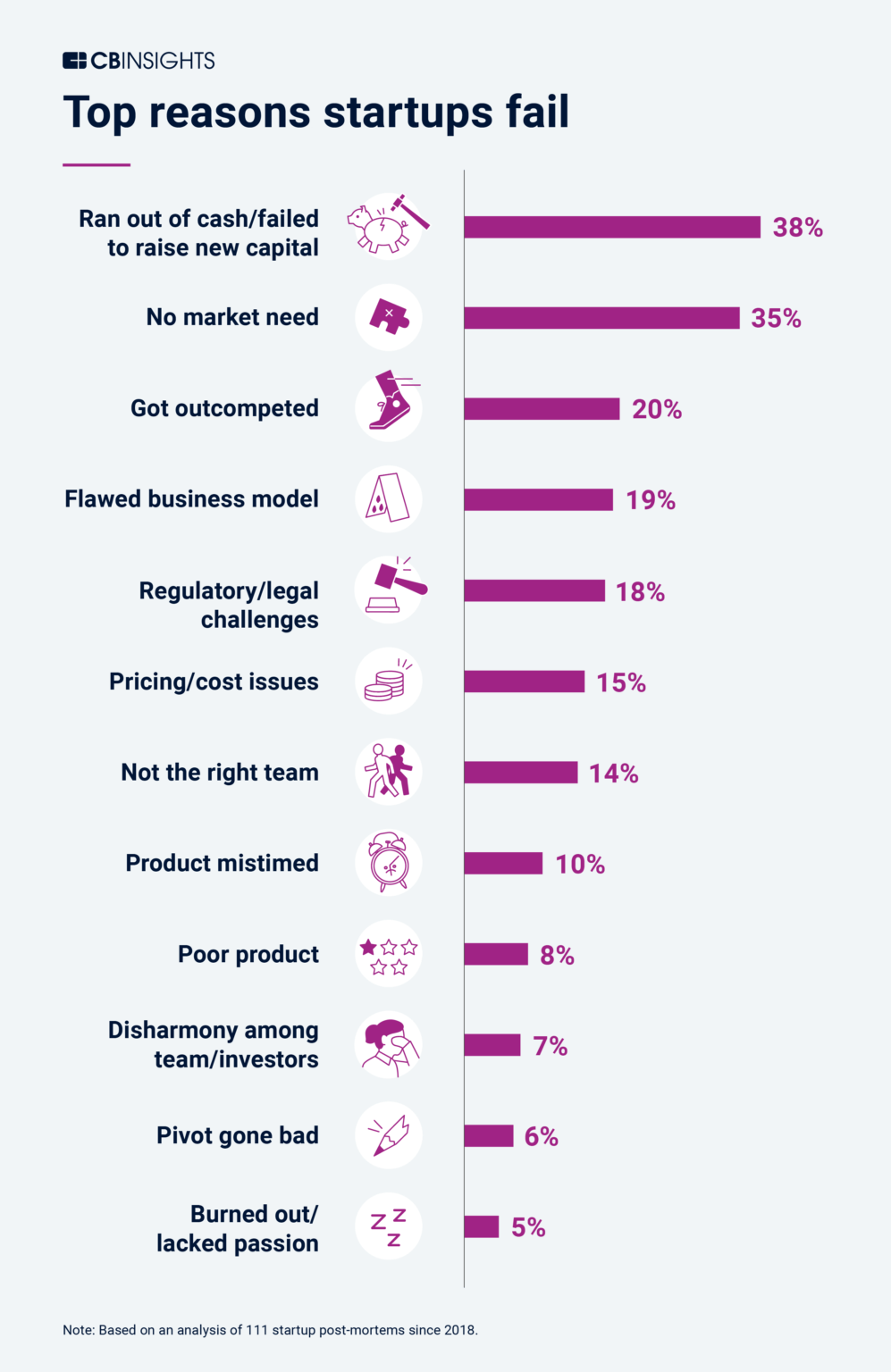Let’s start with some startup failure rates as compiled by the Bureau of Labor statistics (BLS):
- 79.6 percent made it one year (2017).
- 68.8 percent made it two years (2018).
- 61.2 percent made it three years (2019).
- 54.3 percent made it four years (2020).
Now let’s couple these with a report from CB Insights, providing top 12 reasons for why startups fail. Putting the number 1 reason (Running out of cash at 38%) aside for a moment, it’s interesting to see that 35% of companies fail due to “No Market Fit” at 35%.
Ads help us serve our growing community.
Going back to the stats from BLS and doing a correlation with the CB
Insights reports, it can be deduced that as the firm starts maturing,
the flaws start becoming amplified.
A flawed business model (19% of failure), will inevitably cause
price/cost pressures (15%), which could be a byproduct of either:
A) Lack of good understanding of competition (20%)B) Poor mistimed / poor (10% & 8% respectively)
As pressures continue to mount and runway (cash) disappearing,
team/investor (7%) harmony will go out the window as it will become a
survival game. This is unfortunate, albeit true.
To mitigate these,
founders need to start with the basics, as follows:
- Do your research and before putting anything in motion, fill out the business model canvas (BMC).
- A crystalized BMC will ensure that there is potential in the idea. Then move to filling out a financial model (not the same as a business model). This will provide an idea of the runway needed from inception to turning profitable.
- Once this is in place, then move to a detailed business plan, which is a double-click, or a detailed view of the BMC.
- Use the experiment model to stress test the feasibility in the real-world, through a Minimum Viable Product (MVP)
- Finally get ready to scale and pivot.
- Failure is not the end, rather the beginning of the next venture.


0 Comments